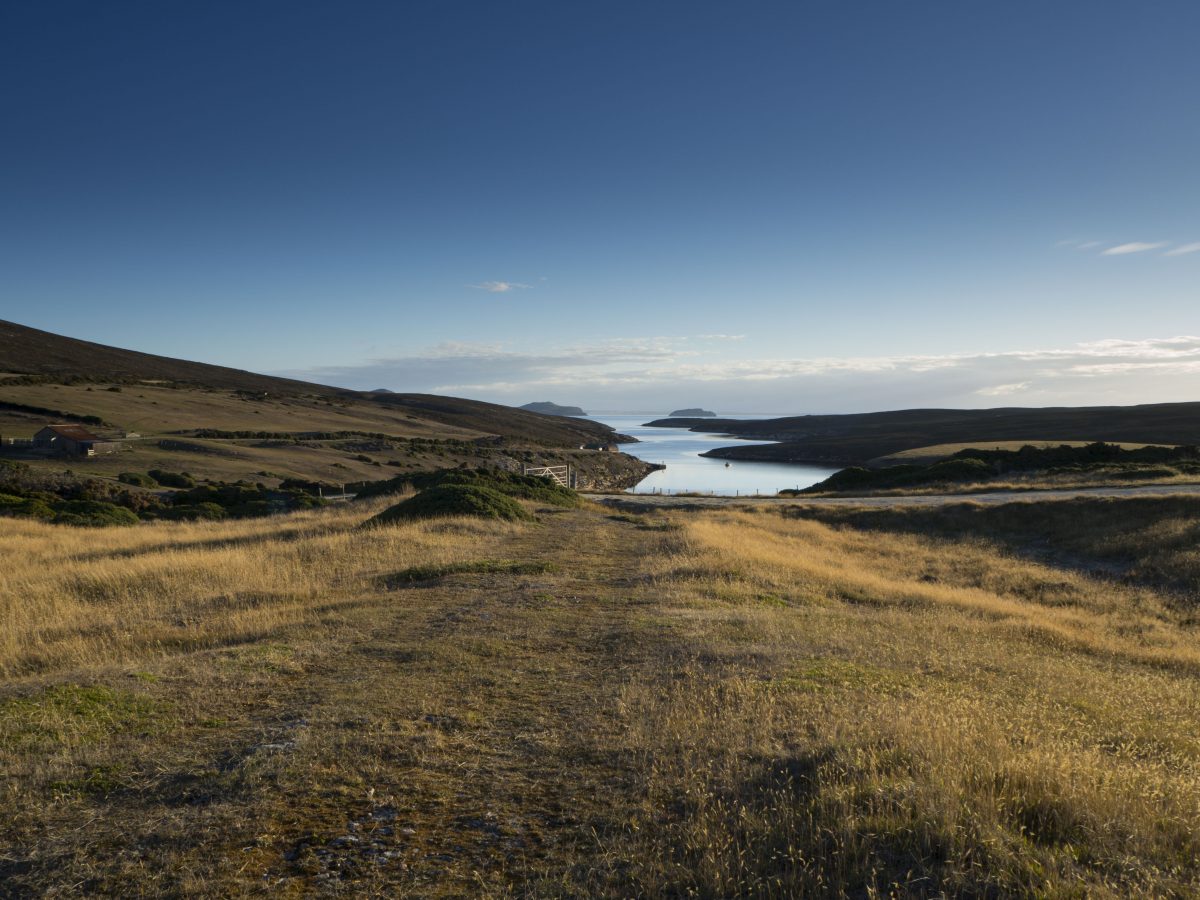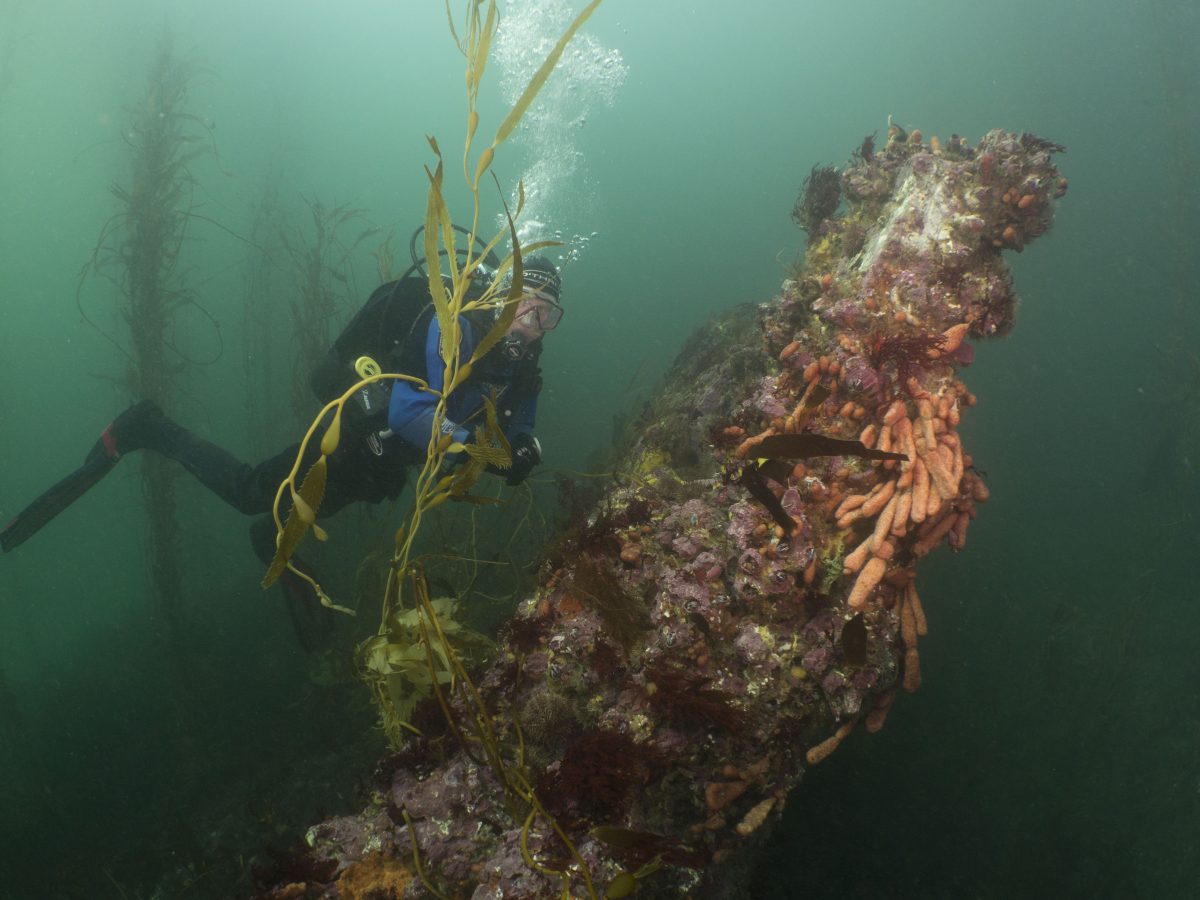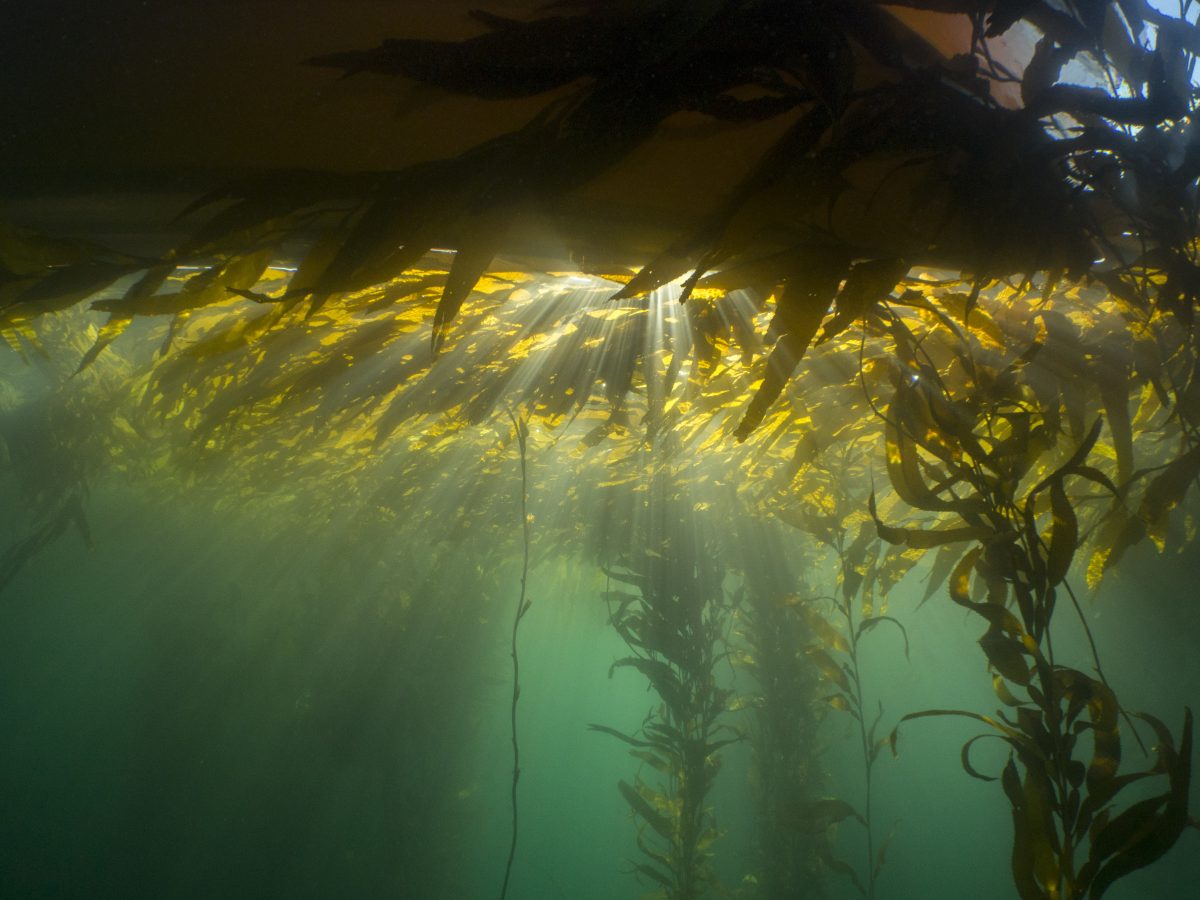From Florida, I headed to the Falklands, the furthest south and possibly remotest place that I have travelled to so far. The landscape across the islands is reminiscent of the Scottish Lowlands and Highlands. However, the underwater life is as different as a cold-temperate environment could be.

There is a wild mix of species from the Pacific, Antarctica and the South Atlantic. While I could recognize some familiar sights from diving off Patagonia, the majority of life underwater was new to me. Geographically so remote, the Falkland’s marine environment is generally underexplored and understudied. To fill in these blank spots on the map, Paul Brickle founded the South Atlantic Environmental Research Institute (SAERI) four years ago. Joining Paul, SAERI and the Shallow Marine Survey Group to dive in the waters of the South Atlantic was a dream come true.
Survey work under challenging prerequisites
Unfortunately, my luggage was delayed in Santiago Airport and didn’t make it to the Falklands. With only one flight a week, I had to make do without my diving equipment for the expedition to Roy Cove, King George Bay on West Falkland. This made it painfully evident how remote we were. Only about three hundred residents live on West Falkland and local island flights operate more like a taxi service than normal passenger airlines. Yet with borrowed dive gear, I got to discover the South Atlantic for myself and contribute to the environmental baseline survey of King George Bay.

It is a huge privilege to dive sites that no one has been to before, and it is even more satisfying to return with quantifiable biological data. We focused our efforts along short transects, recorded the physical environment and split further tasks within buddy teams. My buddy Joost, a local diver and scientists with great taxonomic knowledge counted and recorded the species along a twenty meter transect while I came up behind him photographing quadrats for computer analysis.

Photogrammetric modelling of micro-habitats
One of my contributions to the environmental survey of the Falklands was to test the feasibility of 3-d modelling of kelp holdfasts. Holdfasts are the kelp’s roots, anchoring it firmly to the seabed. Their complex and entangled growth creates a three dimensional habitat for a diverse assemblage of species. 3-d models allow us to quantify the volume, surface area and complexity of this habitat. This technique has a huge potential in marine ecology. Not only could we infer the biomass of the kelp, but it may also allow us to make estimates of the abundance of macroscopic organisms that live in the kelp.
View a 3d model of such a holdfast here! (photos and fly-through: ? Felix Butschek, photogrammetric reconstruction: ? Daniel Bayley)
The light attenuating through the kelp transformed the dive sites into magical forests. The diversity and abundance of life in the Falklands is second to no other in the Atlantic Ocean. Our occasional encounters with fur seals underwater and countless dolphins as well as whales on the surface made the expedition even more exciting. Overall, the trip and survey work in the Falklands was a great introduction to the marine environment of the South Atlantic, and I hope to return there soon. There are wide opportunities for exploration and research in the Falklands, and I have only scraped its surface.
